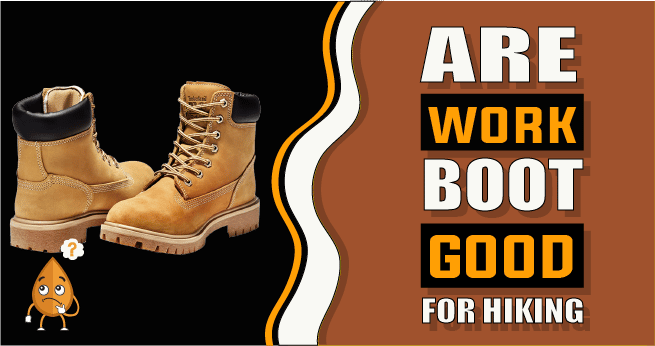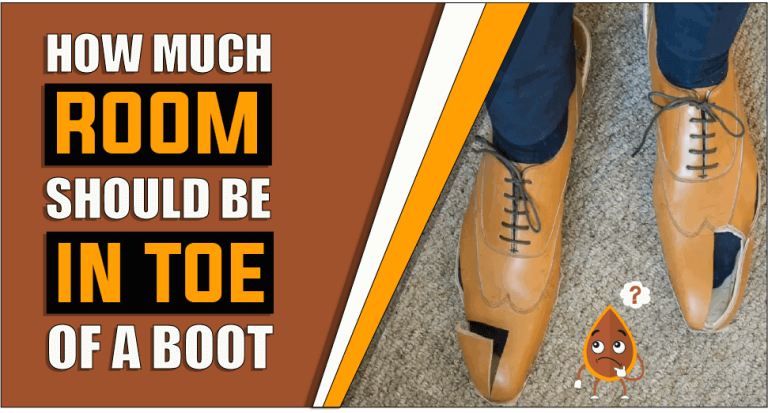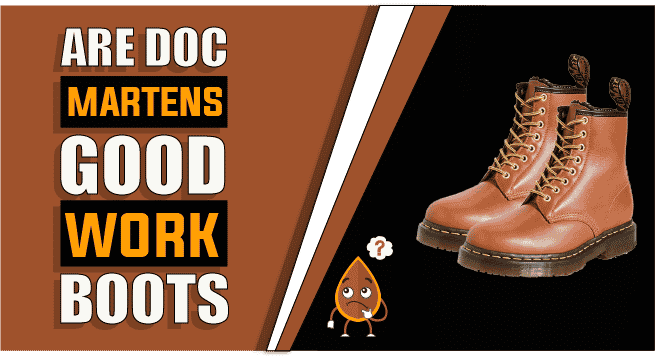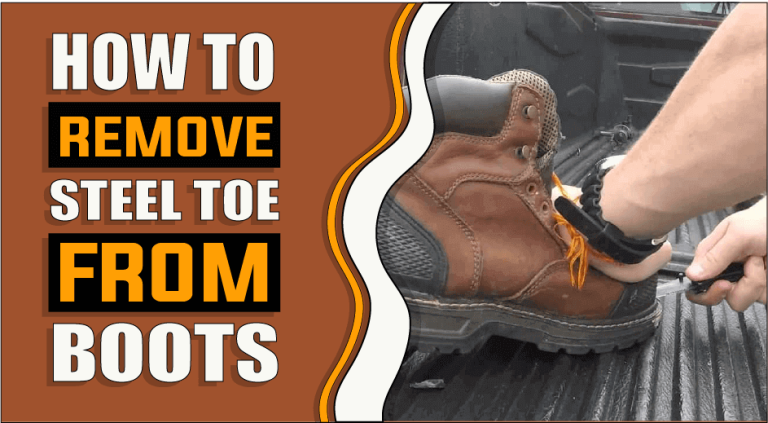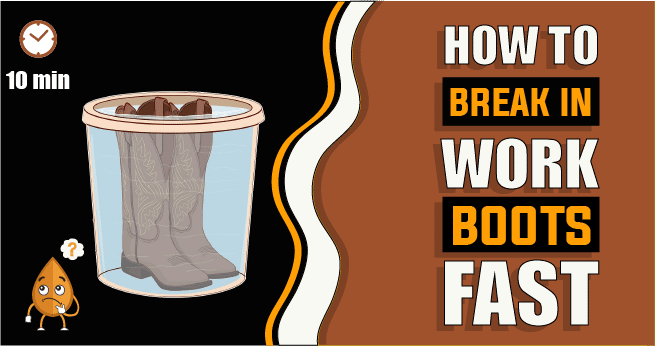Are Steel Toe Boots Bad for Your Feet – The Truth Reveals
Boots are among the most popular footwear types in the world. They are available in a wide range of lengths, widths, and forms, so a boot design is suitable for just about any scenario. But when it comes to working boots, there is no other type that can compare to steel-toe boots. You may have heard a lot of talk about steel-toe boots and whether or not they’re bad for your feet. Some people say that the extra weight of the steel toe can cause problems over time, while others claim that it’s the best way to protect your feet from injuries. So, what is the truth? Are steel toe boots bad for your feet? In this blog post, we’ll take a closer look at the pros and cons of wearing steel-toe boots to help you decide whether they are right for you. Read on to stay safe!
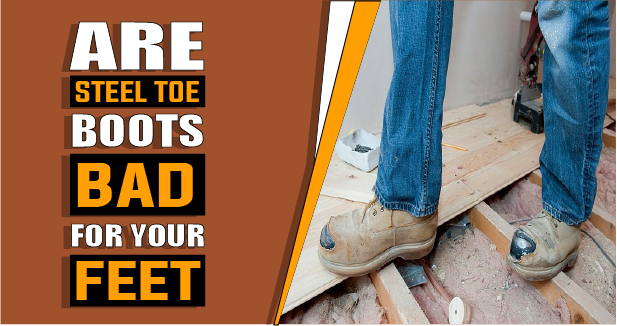
Let’s discuss are steel toe boots bad for your feet?
Are steel-toe boots bad for your feet? This is a question that has been asked by many people who are looking for the best type of footwear to protect their feet while working. But before deciding whether or not they are right for you, you should understand a few things.
First, you should know that steel-toed boots don’t always hurt your feet. They can be highly advantageous for you in many ways.
One of the most important benefits of wearing steel-toe boots is that they can help to protect your feet from being injured. If you operate in an environment with many potential risks for your feet being damaged, wearing steel-toe boots can help lessen the chance of injury.
Another advantage of steel-toe boots is that they keep your feet toasty. If you are working in a cold environment, then wearing steel-toe boots can help to keep your feet warm. This is especially important if you work where you are likely to be exposed to cold temperatures for long periods.
Steel-toe boots have several advantages, but they are not without drawbacks. So look at both of these factors before you decide to buy one for yourself.
One of the most significant downsides of steel-toe boots is that they can be quite uncomfortable to wear. It may take you some time to adjust to the sensation of steel-toe boots if you are not used to wearing heavier boots. Furthermore, the feeling of being weighted down can be pretty uncomfortable.
Another downside of steel-toe boots is that they can be quite expensive. If you are looking for a cheaper option, then you may want to consider other types of footwear. On the other hand, steel-toe boots can be a terrific purchase if you are ready to spend the extra money.
Overall, there are some pros and cons to wearing steel-toe boots. You need to weigh the pros and cons before deciding if they are suitable for you. We recommend that you try a pair of steel-toe boots on for size before making a final decision. This way you can get a feel of the boots and see if they are right for you.
How can you pick the best steel-toed boots for yourself?
When shopping for steel-toe boots, keep the following factors in mind:
1: The size of the boot.
Make sure to try on the boot and walk around in it to ensure a good fit. As if the boot is too large, blisters and other foot issues can occur. And if the boot is too small, it will be uncomfortable and may not provide adequate protection.
2: The type of steel toe.
There are three main types of steel toes: full, half, and cap. Full steel toes extend the entire length of the toe box, while half steel toes only cover the front half of the toe box. Cap steel toes are similar to full steel toes, but they have a small opening at the top of the toe box to allow for ventilation.
3: The style of the boot.
There are many different styles of steel-toe boots on the market, so it is important to choose a boot that is comfortable and stylish. Many steel-toe boots are available in both traditional and non-traditional styles.
4: The price of the boot.
Steel-toed boots can cost anywhere from a few hundred bucks to more than a grand. So make sure to choose a boot that fits your budget and gives you the protection you need.
5: The warranty of the boot.
The majority of steel-toe boots are covered with a one-year warranty. Still, it is better to cross-check the warranty period and its conditions to ensure it will last.
6: The return policy
Make sure the store you purchase your steel-toe boots from has a good return policy if you ever find the need to exchange or return the boots.
7: The material of the boot.
Steel-toe boots are constructed using some materials which include leather, synthetic material, and rubber. It is important to choose a boot that is made from a durable material that will withstand wear and tear.
By considering these aspects, you will be sure to select the best steel-toe boots for yourself.
How should you care for your steel-toed boots?
To keep your steel-toe boots in good condition and prolong their lifespan, it is essential to take proper care of them. Here are some pointers to consult, regarding cleaning.
1: After each wear, use a gentle brush or cloth to remove any dirt or debris from your boots.
2: Apply a waterproofing spray or cream to your boots before each wear, especially if you will be exposed to moisture.
3: When not in use, store your boots in a clean, dry location with a cool temperature.
4: In case they do get wet, wait for them to dry before you go ahead and store them properly.
5: If your boots start to show signs of wear, such as scuffs or scratches, polish them with shoe cream or polish to restore their finish.
6: Stuff some newspaper into your boots before storing them; to help retain their original shape.
Following these tips can help keep your steel-toe boots in good condition and extend their lifespan.
Detailed answer to whether wearing steel-toe boots can cause foot problems?
There are a variety of factors that can contribute to foot problems, and wearing steel-toe boots is just one of them. While steel-toe boots may not be the direct cause of foot problems, they can certainly aggravate pre-existing conditions or contribute to the development of new ones.
Foot problems that can be aggravated due to wearing a steel-toe boot are as follow:
1: Plantar Fasciitis:
This condition is characterized by pain in the heel and bottom of the foot. The most likely factors responsible for this include repeated motion, overstressed muscles, and wearing a steel-toe boot.
2: Bunions:
Bunions are a big toe malformation that can be extremely painful. They are often caused by ill-fitting shoes, and steel-toe boots can certainly exacerbate the condition.
3: Hammertoes:
Hammertoes are a deformity of the smaller toes and can be quite painful. The most likely cause is wearing ill-fitting shoes, and steel-toe boots can exacerbate the condition.
4: Neuromas:
Neuromas are nerve tumors that can develop in the foot. They are often caused by compression or irritation, and steel-toe boots can certainly contribute to the development of this condition.
If you have any of these foot conditions, you should see a doctor or podiatrist for a quick remedy. They can diagnose your condition and recommend the best course of action; instead of relying on a general remedy that might not work for everyone. Sometimes, they may recommend that you stop wearing steel-toe boots altogether.
Most Common Steel Toe Boot Injuries?
When it comes to injuries sustained while wearing steel-toe boots, a few stand out as being more common than others. Here is a look at some of the most common steel toe boot injuries:
1. Sprains and Strains
A sprain or strain is one of the most common injuries that can be sustained while wearing steel-toe boots. This can occur when the boot is not properly laced up, causing the foot to slip around inside the boot and putting strain on the ankle and calf muscles.
2. Foot Injuries
Another common injury that can be sustained while wearing steel-toe boots is a foot injury. This can occur if the boot does not fit properly, if the toe box is too small, or if the boot is not laced up correctly. Foot injuries can also occur if the boots have not been broken in properly, but the wearer uses them to walk on uneven ground.
3. Achilles Tendonitis
Another common injury associated with steel-toe boots is Achilles tendonitis. This condition is caused by the repetitive stress of the boot heel hitting the ground, which puts strain on the Achilles tendon. Symptoms include stiffness and discomfort in the Achilles tendon accompanied by swelling. Its common treatments include taking anti-inflammatory medicine. If it is not available, you can also use an Ice pack to reduce swelling and rest until you can get on your feet without any pain.
4. Shin Splints
Shin splints are another injury that is caused by wearing steel-toe boots. This condition is characterized by pain along the shin bone, which is typically caused by repetitive stress or overuse. Shin splints are typically treated with rest, stretching exercises, and ice. Depending on how bad the pain is, you may also need to wear a splint or take pain medicine.
5. Blisters
Another common problem induced by wearing steel-toe boots is blisters. This is because the heavier boots and steel-toe might brush against the skin, generating friction and irritation. Treatment for blisters typically involves draining the blister and applying a bandage. Depending on the severity of the blister, you may also need to take oral or topical antibiotics.
6. Bunions:
Bunions are a condition that can be caused by wearing ill-fitting shoes, including steel-toe boots. Bunions are characterized by a bony lump that forms on the side of the foot, at the base of the big toe. Symptoms include pain, swelling, and redness in the area. Treatment for bunions typically involves wearing comfortable shoes, taking pain medication, and undergoing surgery in severe cases.
7. Hammer Toes:
Hammer’s toes are another condition that can be caused by wearing ill-fitting shoes, including steel-toe boots. This condition is characterized by a deformity in the toe, which causes it to bend downward. Symptoms include pain and difficulty moving the affected toe. Treatment for hammer toes typically involves wearing comfortable shoes, taking pain medication, and undergoing surgery in severe cases.
8. Plantar Fasciitis:
Plantar fasciitis is a condition that can be caused by wearing steel-toe boots. The pain in the heel and ball of the foot best describes this condition.
The main reason for this pain is inflammation of the plantar fascia, a band of tissue that runs around the bottom of the foot. The treatment of plantar fasciitis rarely requires any kind of surgery and for the most part can be treated with rest, stretching exercises, or through using orthotic devices or splints.
While these are some of the most common injuries associated with steel-toe boots, it’s important to note that any type of shoe can cause injury if it doesn’t fit properly or is worn for too long. If you experience pain while wearing steel-toe boots, be sure to consult a doctor to rule out any serious conditions.
Discuss In Depth Why Steel-toe Boots Are Harmful To Your Feet.
Steel-toe boots can be harmful to your feet for a variety of reasons.
1: Heavy and uncomfortable:
Steel-toe boots are much heavier than regular boots, and they can be quite uncomfortable to wear for extended periods. This can cause foot pain and fatigue, and it can even lead to problems like bunions or hammertoes.
2: Poorly fitting:
Steel-toe boots that aren’t properly fitted can cause more harm than good. If they are overly tight, they can limit blood flow going to your feet and produce swelling and pain. While in case they’re overly big, then they’ll rub and irritate your feet, causing blisters.
3: Not breathable:
Because steel-toe boots are often made with thicker, less breathable materials, they can make your feet sweat more, leading to fungal infections like athlete’s foot.
4: Limited movement:
The rigid design of steel-toe boots can limit your ankle’s range of motion, making it more challenging to balance and walk correctly. This can lead to falls and injuries.
5: Dangerous in certain situations:
Steel toe boots are not safe to wear in certain situations, such as when working with power tools or other dangerous machinery. If something goes wrong, the steel toe could end up causing serious injury to your foot or leg.
Overall, steel-toe boots can be bad for your feet if they don’t fit properly, are made of non-breathable materials, limit your ankle’s range of motion, or are worn in dangerous situations. If you need to wear steel-toe boots for work, be sure to choose a pair that fits well and is comfortable to wear.
How Can One Get Rid of Steel Toe Shoe Foot Problems?
People who wear steel-toed shoes for prolonged periods often have foot problems. And there are several possible explanations for this, but the most likely one is that the shoes do not fit properly. When shoes do not fit correctly, they can rub against the foot and cause calluses, blisters, and other types of discomfort. In addition, if the shoes are too tight, they can cause the foot to become misshapen.
There are a few things that you can do to avoid having foot problems from steel-toe shoes.
1: Check that the shoes fit properly.
This may appear to be a no-brainer but is frequently overlooked. If the shoes are excessively big, they will rub off against your feet, causing blisters and other difficulties. On the other hand, if the shoes are too small, they will not allow your feet to breathe and can cause your feet to become misshapen.
2: Choose shoes with a wide space for your toes.
This will give your toes plenty of room to move around and help avoid any problems that may arise from too much space in the shoe.
3: Make sure that the shoes are well made.
Although there are numerous brands of steel-toe shoes available, not all of them are the same. In terms of quality and durability, some brands significantly outperform others. In addition, some brands offer more support than others. When you are choosing your shoes, make sure to consider these factors.
4: Choose comfortable shoes.
This is probably the most important factor to think about when you are trying to avoid foot problems from steel-toe shoes. If the shoes are not comfortable, you are much more likely to have problems with them. Make sure to try on a variety of different brands and styles before you make your final decision.
5: Talk to your doctor.
If you are having persistent foot problems, it is always a good idea to talk to your doctor. He or she may be able to suggest a different kind of shoe or insert that can help solve your problem.
Foot problems can be a real pain, but they do not have to be a permanent fixture in your life. By following the tips above, you can help to avoid foot problems from steel-toe shoes. If you do have persistent problems, however, be sure to talk to your doctor so that he or she can help you find a solution.
Related Questions:
That depends on how they fit and what you’re wearing them for. If they’re too big, they can rub and cause blisters. If they’re too small, they can pinch and be very uncomfortable. It’s important to get the right size and to break them in slowly by wearing them for short periods at first.
Yes, breathable steel-toe boots do exist. They are made with a variety of materials that allow for airflow and prevent your feet from sweating. However, if you are working in a hot environment, your feet may sweat regardless of the type of boot you are wearing. If you are concerned about sweating, try to find a boot with ventilation holes or a mesh upper.
No, steel-toe boots are not required by OSHA. However, they are recommended if you work in an environment where there is a potential for your feet to be injured by falling objects or other hazards.
Steel-toed boots are safer than standard work boots. They provide extra protection for your toes in case something heavy falls on them or you step on something sharp. They can also help prevent other injuries to your feet, like punctures and crush injuries.
It depends on the person. Some people find that they are too warm, while others don’t have any issue with them. If you think you might be too warm, try wearing a thinner sock or going up a size in your boot.
The steel toe does not damage your foot, however, it is important to wear the proper size and type of shoe to avoid injury.
Steel toe boots can cut off your toes if they are not properly fitted. For example, if your boots are excessively tight, they can pinch and bleed your toes. If the boots are too loose, your feet can slip around inside them and this can also cause cuts on your toes. Steel-toe boots should always be worn with socks that fit snugly so that there is no chance of them slipping off or cutting into your skin.
No, you cannot bend steel-toe boots. Steel toe boots are made to be sturdy and guard against potential injury to your feet. In case you try to bend them, you may damage the boots and hurt yourself in the process.
Yes, you can walk around all day in steel-toed boots. However, you may want to consider wearing them for only part of the day if you are going to be standing or walking for long periods. Steel-toe boots can be quite comfortable, but they can also be quite heavy and cause more fatigue. If you are going to be doing a lot of walking or standing, you may want to wear them for only part of the day.
While steel-toe boots may wear down faster than regular work boots, they will last longer and provide better protection against workplace hazards. Steel toe boots are made to resist severe wear and tear and protect your feet from injury. With proper care, your steel-toe boots can last for many years.
You can make your steel-toe boots more comfortable by using the following ways:
1: Wear thick socks:
This will help cushion your feet and reduce friction.
2. Break them in gradually:
Don’t wear your steel-toe boots for long periods at first. Build up to it slowly so that your feet can get used to the new shoes.
3. Use moleskin or another padding:
You can buy products like moleskin at most drugstores. Cut out a piece that fits over the area that’s causing you discomfort, and attach it to your boot with double-sided tape. This will keep your skin from getting hurt and will drastically reduce friction.
4. Invest in a good quality pair of boots:
It is worthwhile to invest a little more in a pair of comfy, well-fitting boots. On the other hand, cheap steel-toe boots can be very uncomfortable and may not last as long.
5. See a podiatrist:
If you’re still having trouble, it’s worth seeing a podiatrist. They can assist you in determining the source of the issue and recommend treatments or solutions that can help.
Conclusion paragraph:
In conclusion are steel toe boots bad for your feet, Steel toe boots are a type of protective footwear that is commonly worn in workplaces where there is a risk of injury from objects or materials falling on the feet. The steel toe cap prevents compression and impact injuries to the toes. While steel-toe boots offer many benefits, they can also cause foot problems if not worn correctly. In this article, we have looked at the pros and cons of wearing steel-toe boots and provided some tips on how to choose the right pair for you and take care of them properly. We sincerely hope you found this information to be useful.
Ella John created BootsSolution.com with the vision of helping people to find the perfect boots for any occasion. As an expert in the field of footwear, she has created a comprehensive guide to finding the perfect boots. With her BA (Hons) in Footwear Design from De Montfort University, UK, Ella John has been writing about boots for several years. On BootsSolution.com you can find helpful information about the latest trends, tips for taking care of your boots, and advice on how to choose the right pair. Ella’s mission is to provide her readers with the best possible advice and help make sure that everyone can look their best in a perfect pair of boots. So if you’re looking for the information and inspiration you need to find the perfect boots, look no further than BootsSolution.com.


